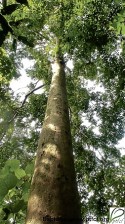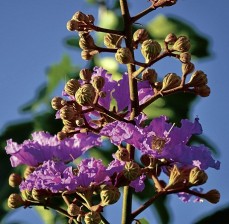Greening with native trees
The loss of forests and the biodiversity they contain is staring us in the face.
Illegal harvesting of trees and trade continue in spite of measures taken to curtail forest destruction. This problem is compounded by the fact that most reforestation efforts in the Philippines focus on the development of forestry and agroforestry system using introduced or exotic tree species.
The species composition of the forest that once covered the land before logging is rarely taken into account. In the past, the use of mahogany (Swietenia macrophylla), Gmelina (Gmelina arborea), acacia (Acacia mangium) and other species occupied center stage in reforestation programs.
Consequences
They were selected for their fast growth and easy germination without taking into account the negative ecological consequences they created.
The recent argument of and insistence by proponents on the use of native trees in forest restoration have been considered by policy-makers, reforestation practitioners, academics and local governments and have successfully gained ground in the National Greening Program of the Aquino administration.
Because conventional reforestation efforts failed to restore forest habitat, did not ensure forest biodiversity and fell short of providing ecological services, a paradigm shift is imperative to achieve sustainable forest management.
Rainforestation
The introduction of “rainforestation” or the use of indigenous trees in the National Greening Program is consistent with the programs in protected-area management and natural reforestation as we are allowing the return of natural vegetation to our landscape.
However, the use of exotic species in reforestation remains prevalent in the Philippines.
Excuses for this often point to the argument that native tree species, especially members of the Dipterocarpaceae family, grow slowly, require shade and fruit only once every three to five years, making it difficult to get enough seeds for reforestation.
While this might be true for certain dipterocarp species, there are species like “bagtikan” (Parashorea malaanonan) that grow in open or nonshaded areas. Many nondipterocarp species can also be used.
Likewise, if the argument is the need to produce timber fast to supply domestic requirements, native trees such as “kalumpit” (Terminalia microcarpa), “bitaog” (Calophyllum blancoi), “bagalunga” (Melia dubia), molave (Vitex parviflora), “lingo-lingo” (Vitex turczaninowii) and other fast-growing species can be raised in plantations.
They perform equally or even better than introduced tree species.
The continued use of introduced tree species in reforestation has not increased forest cover or stopped deforestation. The wood of exotic trees are not sought by those who need quality wood for furniture, door and window jams, and other domestic uses.
Vulnerable to pest
The planting of exotics as monoculture also makes them vulnerable to pest infestations and the repeated cutting and replanting of these short-rotation trees deplete soil nutrients fast.
Why use native tree species in forest restoration or even in plantation forest? Native trees naturally occur in the region in which they evolved. They are adapted to local soil and climate, generally require less water and fertilizer, are often more resistant to pest and diseases, and create and enhance habitat for native wildlife.
In addition, using native trees in forest restoration helps preserve the balance and beauty of natural ecosystems.
The declining source of quality timber outside protected areas or natural parks leads to logging in these areas. Planting native quality-timber trees could counteract this trend.
Biodiversity
This could be the answer to our future demand for good wood for furniture, building houses and wood processing. This would also address our concern for biodiversity and livelihood option.
Encouraging the use of native trees in forest restoration and in production forests needs appropriate policy reform and political will as envisioned by our National Greening Program.
(Paciencia P. Milan, a professor emeritus at the Visayas State University, is chair of the Philippine Tropical Forest Conservation Foundation.)






















